The Spectral Faith of Our Minor Flirtations
The Spectral Faith of Our Minor Flirtations
2023
FOST Gallery, Singapore
Group exhibition curated by Louis Ho
FOST Gallery is delighted to present a group exhibition, The Spectral Faith of Our Minor Flirtations, featuring eight Singaporean and Singapore-based artists. Put together by independent curator, Louis Ho, the show is a genre-bender, oriented around the melding of craft-based techniques and installation art. The expansive range of mediums suggested by “craft” are often relegated to the peripheries of contemporary art; even today, the label bears about it a whiff of the domestic, the functional and the un-ideational. The artists in this show were invited to consider the possibilities of craft in a spatial sense, i.e. as objects that respond to their environment. They utilised ceramic, paper, wood and textiles, among other materials, to produce works that speak to their surroundings, whether that space is physical [the interior architecture of FOST Gallery’s site] or conceptual [the discursive space occupied by “craft” in the landscape of contemporary art]. In presenting the possibilities and potential of craft practices spatially, this exhibition is an experiment in collapsing two disparate genres.
For more information on the exhibition, visit fostgallery.com/spectralfaith
Source | FOST Gallery
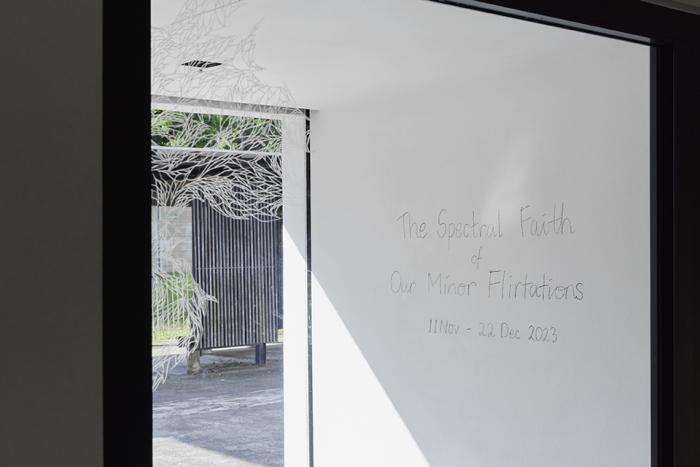
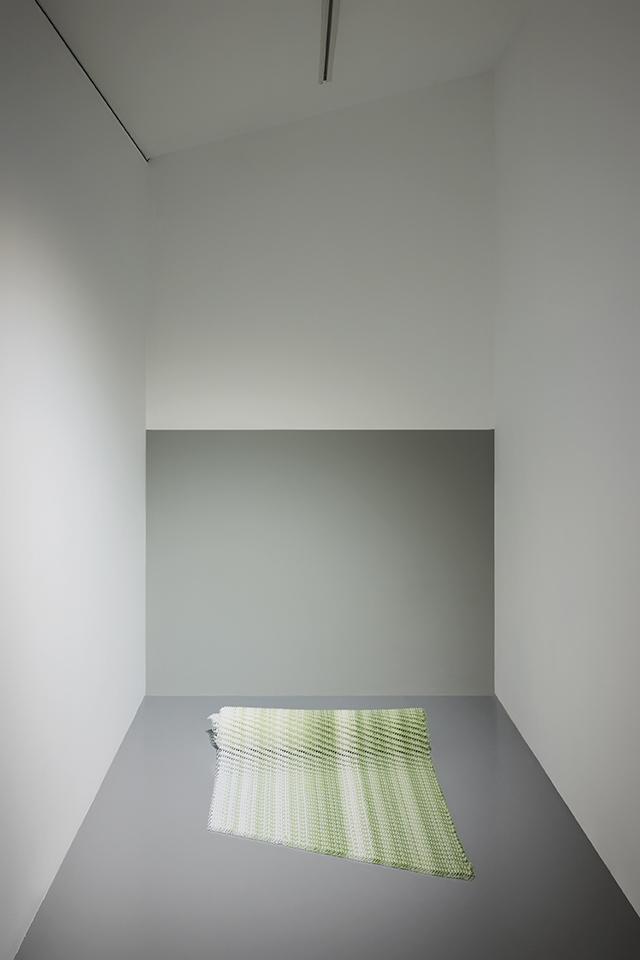
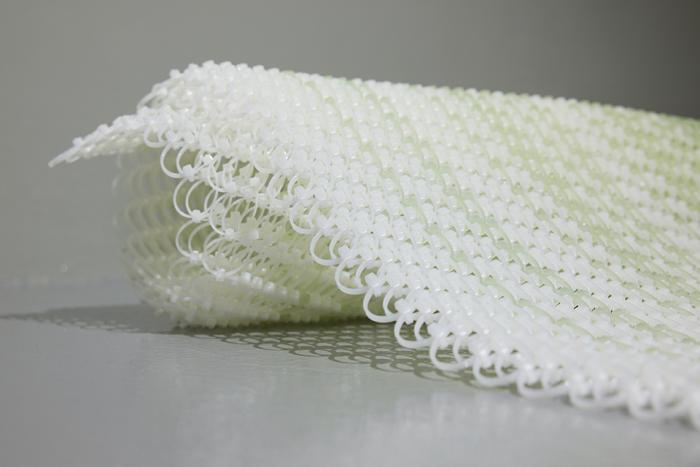
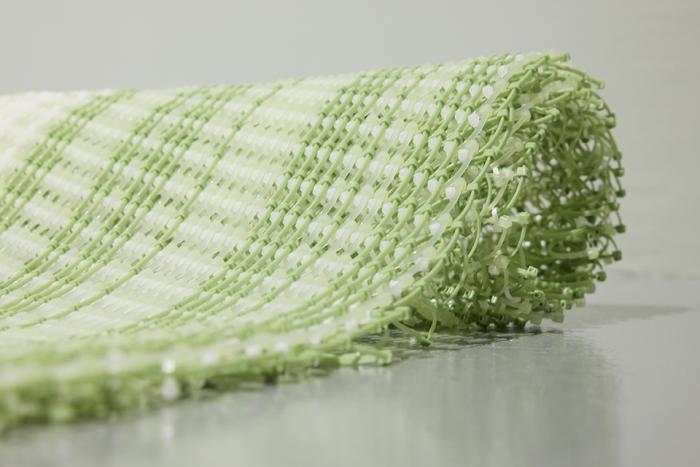
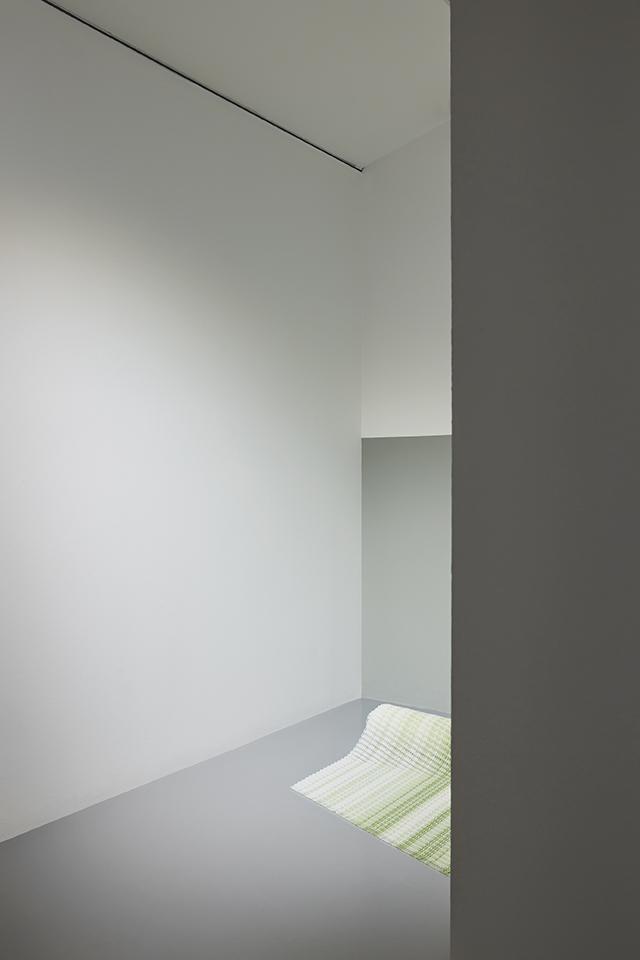
Textile wall, 2023
Cable ties in polypropylene, polyamide 6.6 and heat stabilised polyamide 6.6
Dimensions variable
"…the beginning of building coincides with the beginning of textiles" (Semper, 1989). In Gottfried Semper [1803-79] seminal book The Four Elements of Architecture written in 1852, he proclaimed that the archetypal origin of all constructed forms began with the woven screens of primordial dwelling made from plant materials. The screens eventually evolved into hanging mat-walls and subsequently to more durable materials due to environmental requirements and as culture progressed. His writing spotlighted weaving as the first gesture of architecture, attributing a craft to the production of a woven surface as the true wall for the separation and creation of space [the rigidity of a solid wall is immaterial]. While the tactile wall encloses and defines a space with a visible boundary, it also forms a relational threshold between the two sides/realms.
Critically, Semper’s theory suggested that the wall is not purely a "formal element, nor as a mere space divider, but as a surficial space divider rich with meaning and symbolic imagery" (Islami, 2006). The paradigm shift in the wall’s tectonic origin now focuses on the wall as a textured surface codified with human gestures [craft techniques and traditions] and expressions [patterns/decorative elements]. In this aspect, we can interpret the crafting of the surface as an essential process and that the patterning or ornamentation constitutes the very structure of the ‘wall’ itself. The dichotomy of form and pattern and structure and surface is compressed into a single entity that challenges our perception and understanding of the wall as a surface.
In Textile wall, constructed from interlocking thousands of looped cable ties, the notion of craft is presented in how the pieces are repetitively locked in place following a design and an acquired technique to generate a textile-like construction. Presented as a partially rolled-up object on the floor and tucked against a wall in response to the installation site, the work depicts the floor-wall imagery of the Semperian carpet wall while suggesting a surface in negotiation with space.
Images courtesy of FOST Gallery Photography by Lavender Chang